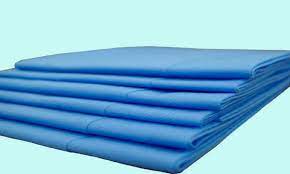Medical Industry: One Of The Major Users Of Nonwoven Fabrics

Nonwovens are called layers or web formations that are technically, thermally, or chemically joined by connecting filaments or fibers (and occasionally by perforating films). The fabric’s threads may be distributed randomly and exclusively in one direction. Many layers may be mixed to provide the necessary mechanical qualities, like strength and elongation. Porosity may be controlled by adjusting the fiber density, size, alignment, and usage of further mechanical processes. What is the use of non-woven fabrics in the medical industry? Medical non-woven textiles are used in various major medical applications, such as face masks, bodysuits, sheets, caps, and filter media. They also serve as the ultimate packing material for sterilized medical supplies. Due to the rapid growth and supply demand, these Nonwoven Fabric Medical have experienced continuous upgrades and development because of their versatility, longevity, and sustainability. Medical nonwoven textiles have successfully entered
